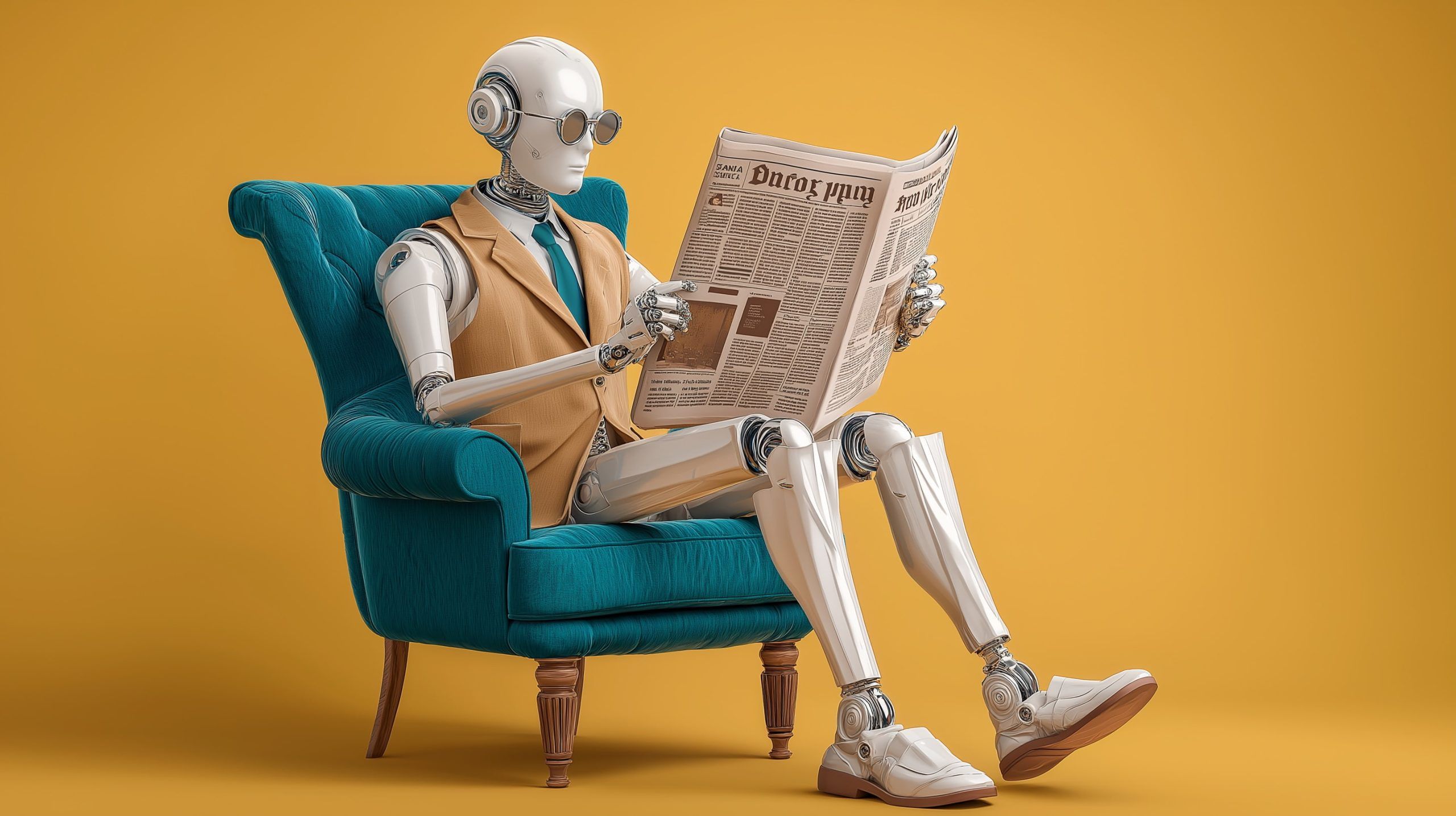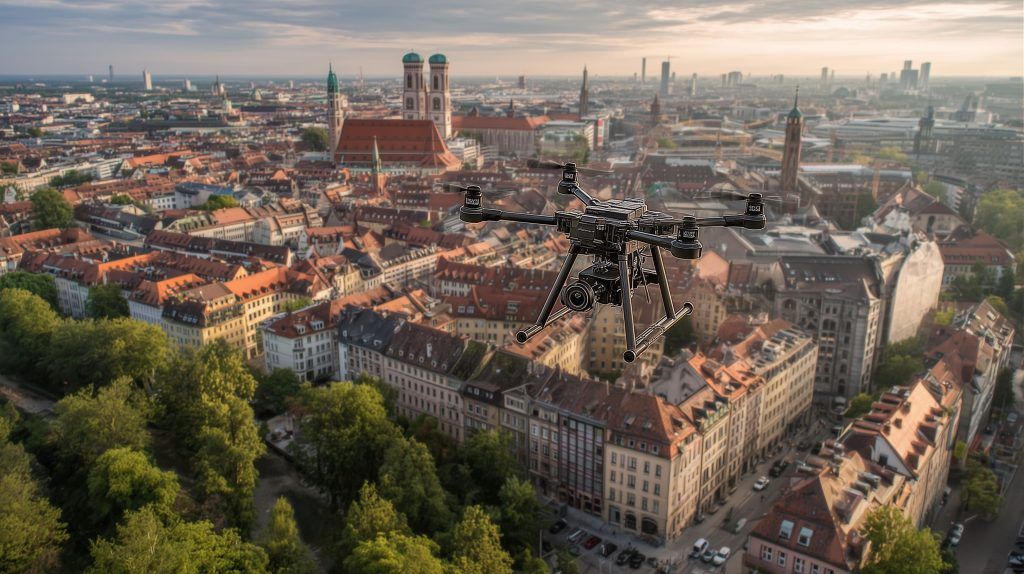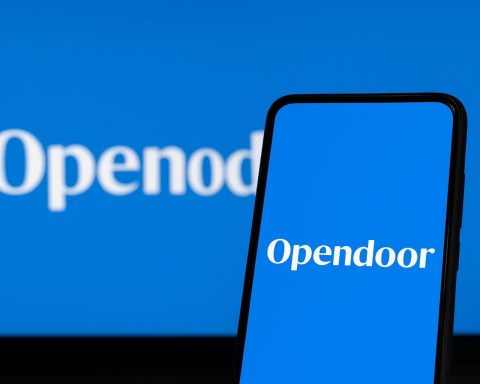- On July 25, 2025, Meta hired Shengjia Zhao, a co-creator of OpenAI’s ChatGPT and GPT-4, as chief scientist of its new “Superintelligence Lab.”
- The Superintelligence Lab will consolidate Meta’s LLaMa models and long-term AGI work, operate separately from FAIR, and Zuckerberg has said it aims to build “full general intelligence” as open source.
- OpenAI launched ChatGPT Agent and introduced Customize ChatGPT, making these features available to all ChatGPT Plus, Pro, and Team subscribers after a trial period.
- Alibaba open-sourced four new generative AI models in a single week, including the 235-billion-parameter Qwen3-235B-A22B-Thinking-2507 (Qwen3-Thinking-2507), which scored 92.3 on AIME, 74.1 on LiveCodeBench, and 81.1 on GPQA.
- Google DeepMind released Aeneas, an AI model trained on Roman epigraphy to reconstruct damaged Latin inscriptions, predicting missing text, dates and likely authors or origins, with best results when used alongside historians.
- Anthropic unveiled an “army of autonomous AI agents” to stress-test models for misbehavior, open-sourced a replication on GitHub, and described roles including a tool-using investigator, an evaluation agent, and a red-team to probe alignment issues.
- The United States unveiled America’s AI Action Plan with over 90 federal initiatives, and President Trump signed three AI-focused Executive Orders, including bans on biased or “woke” AI in federal procurement, boosts to AI exports, and accelerated defense AI adoption, while rescinding the 2023 Biden-era AI order.
- At WAIC in Shanghai on July 26, Premier Li Qiang announced China will spearhead an international AI cooperation organization to regulate AI and share advances, and China released an online AI governance plan inviting global collaboration, highlighting 800+ exhibiting companies with 40 new LLMs and 60 intelligent robots.
- Amazon announced the acquisition of Bee, a San Francisco startup building a $50 AI-powered wearable that records and transcribes conversations, with Bee’s team joining Panos Panay’s devices group.
- Musk’s xAI has raised about $5 billion in debt and $5 billion in equity this year, acquired Twitter/X for $33 billion in March to feed data into its AI effort, and plans a potential Tesla investment in xAI with a shareholder vote expected by Tesla’s November annual meeting.
Meta Supercharges AI Ambitions with OpenAI Talent
Meta’s High-Profile Hire: In a bold talent grab, Meta Platforms announced it has hired Shengjia Zhao, a co-creator of OpenAI’s ChatGPT and GPT-4, as chief scientist of its new “Superintelligence Lab.” CEO Mark Zuckerberg revealed the move on July 25, calling Zhao a “co-founder” of the lab who will “set the research agenda and scientific direction… working directly with me and Alex [Wang]” [1]. (Alexandr Wang, the former Scale AI CEO, recently became Meta’s Chief AI Officer after Meta took a stake in his startup [2].) Zhao is one of several top researchers lured from OpenAI to Meta in recent weeks amid a fierce talent arms race [3]. Meta is reportedly offering lavish pay and equity to close the gap in advanced AI [4]. The new Superintelligence Lab will consolidate work on Meta’s LLaMa models and long-term AGI goals, operating separately from FAIR (Meta’s existing AI research group led by Yann LeCun) [5]. Zuckerberg has openly declared Meta’s aim to build “full general intelligence” as open source – an approach that has drawn both praise and concern in the AI community [6].
OpenAI & Google Unveil New Tools: Meanwhile, OpenAI and Google rolled out notable AI product updates. OpenAI fully launched its ChatGPT “Agent” feature to all ChatGPT Plus, Pro, and Team subscribers after a trial period [7]. This Agent allows ChatGPT to perform web browsing and integrate “Operator” and “Deep Research” tools for more powerful, multi-step tasks [8]. OpenAI also introduced “Customize ChatGPT,” letting users personalize the chatbot’s tone and style instead of the default cheerful persona [9]. Not to be outdone, Google debuted an AI-powered “Web Guide” in Search (using its Gemini model) that replaces the classic list of blue links with an AI-curated summary of results [10]. The Web Guide uses multiple simultaneous queries to deliver comprehensive, context-aware answers on the “Web” tab of Google Search [11]. Google’s consumer apps gained fresh AI features as well: YouTube Shorts unveiled a generative tool to convert static images into 6-second videos with dynamic effects [12], and Google Photos added an “Imagen AI” Remix that can transform user photos into animated sketches or 3D renderings [13]. Even developers saw new toys – GitHub launched “Spark,” a tool (powered by Anthropic’s Claude model) that builds full-stack apps from natural language prompts, dramatically speeding up prototyping [14]. In short, tech giants are rapidly pushing generative AI features into search, social media, and coding, aiming to redefine how we create and find information.
Breakthrough Models and Research: Alibaba’s Qwen Leads, DeepMind Digs Up History
Alibaba’s Record-Smashing Open-Source AI: A surprise powerhouse this week came from China’s Alibaba. Its AI research team open-sourced four new generative AI models in a single week [15], culminating in a 235-billion-parameter reasoning LLM called Qwen3-235B-A22B-Thinking-2507 (shortened to “Qwen3-Thinking-2507”). This model is specifically designed for complex “chain-of-thought” reasoning, using self-reflection to improve accuracy on hard tasks [16]. The results are dramatic – Qwen3-Thinking now ranks at the top of multiple key benchmarks, even rivaling or surpassing proprietary models from OpenAI and Google. For example, on the AIME math and logic exam, Qwen3-Thinking scored 92.3, narrowly beating OpenAI’s latest mini-model and Google’s Gemini-2.5 Pro [17]. It also set a new high score (74.1) on the LiveCodeBench coding test, edging out Google’s Gemini (72.5) and OpenAI’s model [18]. On a graduate-level QA benchmark (GPQA), it hit 81.1, approaching the top closed-source model’s 86.4 [19]. These feats led one AI influencer to proclaim “Qwen’s strongest reasoning model has arrived, and it is at the frontier.” [20] Alibaba’s rapid open-source innovation – four models in one week – signals a shift in the AI landscape, with cutting-edge capabilities increasingly coming from openly released models [21]. It also highlights China’s AI prowess despite U.S. export bans on advanced chips.
Google DeepMind’s Ancient Text Decoder: Not all AI breakthroughs involve billion-parameter chatbots – some are helping scholars piece together human history. Google’s DeepMind introduced “Aeneas,” a first-of-its-kind AI model that helps historians contextualize and restore damaged ancient Latin inscriptions [22] [23]. Trained on a vast dataset of Roman epigraphy, Aeneas can predict missing parts of inscriptions on stone, suggest likely dates and locations, and even identify the most probable authors or origins of a text [24]. This generative model effectively fills in gaps where letters have worn away over millennia. Early demonstrations showed Aeneas successfully reconstructing incomplete Latin texts in a way that closely matched expert historians’ hypotheses [25]. Researchers emphasize that Aeneas works best as an assistive tool – the “best results come when a human and the model work together” to cross-verify each other [26]. Still, the ability of AI to “fill in the gaps of damaged Latin texts” is being hailed as a breakthrough for archaeology [27], potentially unlocking countless historical records that were previously unreadable.
AI Safety & Alignment Advances: In the realm of AI ethics and safety, startup Anthropic (maker of the Claude chatbot) unveiled an intriguing approach to audit AI models for misbehavior. On July 25, Anthropic’s researchers announced they had built an “army of autonomous AI agents” tasked with stress-testing other AI models for alignment issues [28] [29]. These “auditing agents” can independently probe a target model (like Claude itself) to uncover hidden undesirable behaviors or goals. According to Anthropic, in internal tests the agents “successfully uncovered hidden goals, built safety evaluations, and surfaced concerning behaviors” in a prototype model [30]. The company has released a research paper and even open-sourced a replication of the audit agents on GitHub [31]. The agents perform different roles – one acts as a tool-using investigator digging through model responses, another as an evaluation agent looking for behavioral red flags, and a third as a “red-team” adversary trying to prompt misbehavior [32]. While far from perfect, these agents show “impressive performance” in catching alignment issues and can run multiple audits in parallel, helping scale up safety testing [33]. AI governance experts see this as a promising step toward automated oversight of powerful models, which could be crucial as systems grow more complex. As Anthropic’s team noted, with further development “automated auditing could significantly help scale human oversight over AI systems.” [34]
Global AI Policy: U.S. Action Plan vs. China’s Cooperation Pact
Washington Bets on Deregulation and Defense: The past 48 hours saw major moves on AI policy from the world’s two leading AI superpowers – and their visions could not be more different. In Washington D.C., the White House (under President Donald Trump) rolled out “America’s AI Action Plan” on July 23, a sweeping strategy to cement U.S. leadership in AI [35]. The plan contains over 90 federal initiatives across three pillars – accelerating AI innovation, building domestic AI infrastructure, and forging pro-American AI standards [36]. To back this up, President Trump signed three AI-focused Executive Orders this week. One order bars federal agencies from procuring AI that is “biased” or “woke,” essentially banning AI models that incorporate certain diversity or inclusion considerations in government use [37] [38]. Another order aims to promote U.S. AI exports and cooperation with allies, part of a bid to “vastly expand U.S. AI exports” and maintain an edge over China [39]. A third order directs the Pentagon to accelerate adoption of AI in defense, dovetailing with the DoD’s recent $800M in contracts to firms like OpenAI, Google, Anthropic, and xAI for national security AI projects [40] [41]. In a notable shift, Trump also rescinded a 2023 Biden-era AI executive order that had imposed strict risk management requirements [42]. The message from the U.S. administration is clear: it’s prioritizing innovation and geostrategic dominance, even if that means loosening regulations. As one White House fact sheet put it, the U.S. intends to “win the race” in AI through rapid innovation and lighter-touch oversight [43].
Beijing Proposes a Global AI Alliance: Half a world away, China staked out a contrasting approach. Premier Li Qiang, speaking on July 26 at the World Artificial Intelligence Conference (WAIC) in Shanghai, announced that China will spearhead the creation of an international AI cooperation organization [44] [45]. The proposed group would facilitate “global efforts to regulate fast-evolving AI technology” and share AI advances, presenting China as an alternative leader to the U.S. in setting AI rules [46]. Li warned that without cooperation, AI could become the “exclusive game of a few countries and companies,” a pointed critique seemingly aimed at U.S. moves to curb China’s access [47]. China’s vision is for AI to be openly shared, with all nations having equal rights to benefit – and Li pledged Beijing is willing to share its development experience and even AI products, especially with developing “Global South” countries [48]. “Overall global AI governance is still fragmented,” Li said. “Countries have great differences… We should strengthen coordination to form a global AI governance framework that has broad consensus as soon as possible.” [49] China also released an AI governance action plan online, inviting governments, companies and research institutions worldwide to collaborate on rules and to join a cross-border open-source AI community [50]. Notably, this overture comes as China is showcasing its own tech prowess – at WAIC, over 800 companies (including giants like Huawei and Alibaba) are exhibiting AI innovations, from 40 new large language models to 60 intelligent robots [51]. By positioning itself as a champion of multilateral AI governance, China is likely aiming to counterbalance U.S. dominance and rally other countries to its vision of “AI for all.” The geopolitical AI policy divide is stark: the U.S. is doubling down on competition and deregulation, while China calls for global consensus and joint safeguards.
Big Money and Startups: AI Funding Flows and Deals Galore
Even as governments spar, investors and tech companies are pouring money into AI ventures worldwide. Major deals and funding rounds in the past two days include:
- Amazon’s Wearable AI Bet – Acquires Bee: Tech giant Amazon confirmed it is acquiring Bee, a San Francisco startup making a $50 AI-powered wearable that records and transcribes your daily conversations [52]. Bee’s wristband continuously “listens in” and uses AI to distill recordings into summaries, to-do lists, and other notes [53]. Amazon’s devices chief Panos Panay personally courted the deal, and Bee’s team will join his group when it closes [54]. “We imagined a world where AI is truly personal, where your life is understood and enhanced by technology that learns with you,” said Bee CEO Maria Zollo of her company’s vision [55]. Amazon sees the “second memory” wearable as a natural complement to its Alexa ecosystem, after its own experiments with voice-recording glasses and health bands. The Bee acquisition (for undisclosed terms) underscores Amazon’s commitment to ubiquitous AI – literally putting an always-listening assistant on your wrist.
- Musk’s xAI Ties Up with Tesla: In the crossover of AI and automakers, Tesla revealed it has received multiple shareholder proposals regarding CEO Elon Musk’s new AI startup, xAI [56]. Musk has floated the idea of Tesla investing in xAI, though he ruled out a full merger [57]. He plans to hold a shareholder vote on taking an ownership stake in xAI [58]. The interest comes as xAI has raised massive funds this year – a $5 billion debt round alongside $5 billion in equity from investors [59] – and embarked on audacious projects. Notably, xAI acquired the social network X (Twitter) in March for $33 billion to feed data to its AI, and it has integrated its “Grok” AI chatbot into Tesla vehicles to enhance in-car experiences [60]. Musk’s empire-building has Tesla, X, and xAI working in tandem: “He’s pursuing an integration strategy across his business empire,” Reuters notes [61]. However, this raises governance questions – hence the shareholder proposals urging oversight of any Tesla-xAI deal [62]. Musk, for his part, welcomes the input: “Shareholders are welcome to put forward any proposals they’d like,” he said on an earnings call, while maintaining that Tesla would only include one such proposal in the proxy per SEC rules [63]. The vote is expected by Tesla’s annual meeting in November, making it a closely watched test of investor appetite for blending an auto company with an AI startup.
- Global VC Funding Spree: Venture capital and corporate investors continue to fuel AI startups across domains and continents. Among notable raises: Netrasemi, a semiconductor startup in Kerala, India, secured a ₹1.07 billion (~$12 million) Series A to develop edge AI chips [64]. Netrasemi is designing specialized processors for IoT devices – including an AI video analytics chip and a smart sensor microcontroller – aiming to bolster India’s homegrown silicon in the AI era [65]. In Israel, Scopio Labs snagged a $10 million extension to its Series D round to accelerate an AI-powered blood diagnostics platform [66]. Scopio’s device uses high-resolution imaging and AI to autonomously analyze blood smears, promising to eliminate one of the last manual bottlenecks in lab testing [67]. Over in the UK, Lightyear – a London-based fintech app – raised $23 million (Series B) to expand its commission-free investing platform and build out new AI-driven features [68] [69]. Lightyear plans to use AI to help explain stock moves and market trends to everyday investors, as it takes on U.S. rivals like Robinhood [70]. And in the U.S., defense tech is getting AI love: Spear AI, a startup founded by Navy veterans, raised its first outside capital (amount undisclosed) to apply AI to submarine warfare data [71]. Spear AI specializes in analyzing passive acoustic data from underwater sensors – essentially using AI to help sub operators tell a whale from a hostile vessel [72]. From chips and healthcare to finance and defense, these investments show that the AI gold rush remains in full swing around the globe.
AI in Society: Experts Weigh Promise and Peril
Altman’s Vision of Abundant AI (and Warnings): OpenAI CEO Sam Altman made headlines with some provocative statements about the future of AI during a July 22 fireside chat at a Federal Reserve event. Altman predicted that AI is on the cusp of delivering “intelligence too cheap to meter,” riffing on an old nuclear power slogan [73]. He argued the speed of AI progress is still vastly “unappreciated” and suggested AI may represent a bigger technological leap than the internet itself [74]. However, Altman also sounded alarms about the security risks of AI’s rapid advancement. He noted that AI-generated deepfakes have “fully defeated most of the ways that people authenticate” identity [75]. In particular, he called it “crazy” that some banks still use voiceprints or face recognition as passwords, given that modern AI can mimic voices and images with disturbing accuracy [76]. “AI has fully defeated that,” Altman said of voice/face authentication, warning of a looming “significant impending fraud crisis.” [77] To combat this, Altman has been evangelizing World ID, a controversial iris-scanning digital ID project to prove human identity in an AI-driven world [78] [79]. His dual message – boundless AI benefits on one hand, and urgent new threats on the other – captures the current public discourse. It’s a “weird emergent” moment, as Altman himself put it recently, where society must adapt quickly to AI’s growing capabilities or risk being caught off-guard [80].
Hollywood Strikes Back at AI: Nowhere is the tension between AI’s promise and peril more publicly visible than in the entertainment industry. As of July 25, Hollywood actors (SAG-AFTRA) were in the midst of a high-profile strike, with one of their core grievances being the unchecked use of AI in film and TV production. Actors fear studios will use generative AI to simulate performers’ voices or likenesses without fair compensation or consent – essentially creating digital replicas that could replace human talent. SAG-AFTRA President Fran Drescher delivered an impassioned speech warning of this future. “If we don’t stand tall right now, we are all going to be in jeopardy of being replaced by machines and big business,” Drescher told actors at a strike press conference, blasting studio executives for pushing technologies that could undermine creative professions [81]. She noted that greed and technological change (“streaming, digital, AI”) have fundamentally altered the industry, and that the union is “fighting for the survival of our profession” in the face of these shifts [82] [83]. A particularly dystopian proposal from studios – scanning background actors and using their 3D likeness in perpetuity with a one-time payment [84] – became a rallying point for performers. In response, the union is demanding comprehensive provisions for informed consent and fair pay whenever a “digital replica” of an actor is made or used [85] [86]. This labor dispute has shone a spotlight on broader AI ethics issues: Who owns one’s face or voice? How do we value human creativity in the age of synthetic media? The outcome of the strike could set important precedents for intellectual property and labor rights in the AI era. As SAG-AFTRA’s stance gains public sympathy, other groups – from visual artists to voice actors – are voicing similar concerns about generative AI appropriating their work without permission. The debate underscores that even as AI offers exciting new tools, it is also raising fundamental questions about privacy, ownership, and the future of work that society is only beginning to grapple with.
In summary, the last two days have illustrated the breakneck pace and vast scope of today’s AI revolution. We’ve seen tech giants making bold plays (Meta’s talent coup, Amazon’s wearable push), cutting-edge research smashing benchmarks (Alibaba’s Qwen outthinking the competition), and governments maneuvering for influence (U.S. vs China on AI governance). AI is permeating every sector – from coding to healthcare to creative arts – bringing transformative innovation as well as contentious challenges. As expert voices remind us, this transformative power cuts both ways: it can empower humanity with “intelligence too cheap to meter,” or, if misused, it can leave us “in jeopardy of being replaced by machines.” The world is watching these developments closely, knowing that decisions made now will shape the future of AI for decades to come.
Sources: Recent news reports and press releases from July 25–26, 2025. All linked sources are cited for verification of facts and quotes:
- Reuters – Meta hires ChatGPT co-creator [87] [88]; Amazon acquires Bee [89] [90]; Tesla/xAI proposals [91] [92]; Trump AI export plan [93]; Trump revokes AI regulation [94]; China’s AI cooperation call [95] [96]; Alibaba Qwen benchmark [97]; Anthropic audit agents [98]; Spear AI submarine data [99].
- VentureBeat – Alibaba’s Qwen open-source models [100] [101]; Anthropic auditing agents paper [102] [103].
- Medium (Cherry Zhou) – AI product launches (ChatGPT Agent, Google Web Guide, YouTube Shorts AI, etc.) [104] [105] [106].
- Bloomberg – Unitree $5,900 Humanoid Robot [107].
- Reuters – China WAIC speech (Li Qiang quotes) [108] [109]; Funding news (Netrasemi, Scopio, Lightyear) [110] [111] [112].
- Biometric Update – Sam Altman “too cheap to meter” and AI defeating biometrics [113] [114].
- Rev (Speech Transcript) – Fran Drescher on AI replacing actors [115].
References
1. www.reuters.com, 2. www.reuters.com, 3. www.reuters.com, 4. www.reuters.com, 5. www.reuters.com, 6. www.reuters.com, 7. medium.com, 8. medium.com, 9. medium.com, 10. medium.com, 11. medium.com, 12. medium.com, 13. medium.com, 14. medium.com, 15. venturebeat.com, 16. venturebeat.com, 17. venturebeat.com, 18. venturebeat.com, 19. venturebeat.com, 20. venturebeat.com, 21. venturebeat.com, 22. blog.google, 23. www.smithsonianmag.com, 24. news.artnet.com, 25. news.artnet.com, 26. www.nature.com, 27. www.nature.com, 28. www.moneycontrol.com, 29. venturebeat.com, 30. venturebeat.com, 31. venturebeat.com, 32. venturebeat.com, 33. venturebeat.com, 34. venturebeat.com, 35. www.seyfarth.com, 36. www.workforcebulletin.com, 37. www.whitehouse.gov, 38. www.whitehouse.gov, 39. www.reuters.com, 40. www.reuters.com, 41. www.reuters.com, 42. www.reuters.com, 43. www.seyfarth.com, 44. www.reuters.com, 45. www.reuters.com, 46. www.reuters.com, 47. www.reuters.com, 48. www.reuters.com, 49. www.reuters.com, 50. www.reuters.com, 51. www.reuters.com, 52. www.reuters.com, 53. www.reuters.com, 54. www.reuters.com, 55. www.reuters.com, 56. www.reuters.com, 57. www.reuters.com, 58. www.reuters.com, 59. www.reuters.com, 60. www.reuters.com, 61. www.reuters.com, 62. www.reuters.com, 63. www.reuters.com, 64. techstartups.com, 65. techstartups.com, 66. techstartups.com, 67. techstartups.com, 68. techstartups.com, 69. techstartups.com, 70. techstartups.com, 71. www.reuters.com, 72. www.reuters.com, 73. www.biometricupdate.com, 74. www.biometricupdate.com, 75. www.biometricupdate.com, 76. www.biometricupdate.com, 77. www.biometricupdate.com, 78. www.biometricupdate.com, 79. www.biometricupdate.com, 80. www.aol.com, 81. www.rev.com, 82. www.rev.com, 83. authorsguild.org, 84. authorsguild.org, 85. authorsguild.org, 86. authorsguild.org, 87. www.reuters.com, 88. www.reuters.com, 89. www.reuters.com, 90. www.reuters.com, 91. www.reuters.com, 92. www.reuters.com, 93. www.reuters.com, 94. www.reuters.com, 95. www.reuters.com, 96. www.reuters.com, 97. venturebeat.com, 98. venturebeat.com, 99. www.reuters.com, 100. venturebeat.com, 101. venturebeat.com, 102. venturebeat.com, 103. venturebeat.com, 104. medium.com, 105. medium.com, 106. medium.com, 107. www.bloomberg.com, 108. www.reuters.com, 109. www.reuters.com, 110. techstartups.com, 111. techstartups.com, 112. techstartups.com, 113. www.biometricupdate.com, 114. www.biometricupdate.com, 115. www.rev.com










